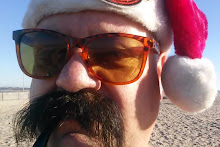 By A&U | March 7th, 2011 Photographer George Dinhaupt Explores the Beauty and Importance of Human Diversity by Brent Calderwood.
By A&U | March 7th, 2011 Photographer George Dinhaupt Explores the Beauty and Importance of Human Diversity by Brent Calderwood.Dinhaupt refers to much of his work as “honorific portraiture,” which originally referred to the large-scale iconography of pharaohs and Caesars; Dinhaupt repurposes the ancient tradition to depict people with HIV, men of color, and a wide array of bodies and body types.
In the second century, muscular busts of the aging Hadrian sent one kind of political message; in the second millennium, a very different political message is conveyed by Dinhaupt’s honorific portrait of a subject he refers to as “Saint Felippe,” which hangs in the permanent collection at the Leslie-Lohman Gallery in New York City. Nude and attached to an IV, the subject’s unmistakable ease and mirth subvert ideas about illness and honorability. In Dinhaupt’s deft hands, seeming opposites like ease and disease, levity and gravitas, feel integrated and natural.
Dinhaupt’s influences are as diverse as his subjects and styles. His black-and-white studio portraits, as in his “With Us” series, are redolent of Robert Mapplethorpe, while much of his more recent work, utilizing natural light and candid settings like roadside diners, point to the snapshot and documentary aesthetics of Nan Goldin and Catherine Opie.

